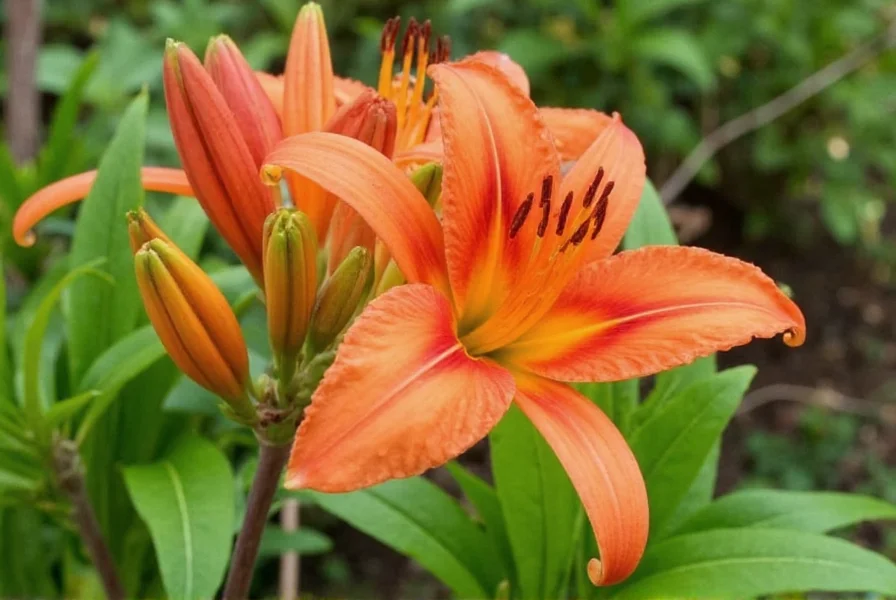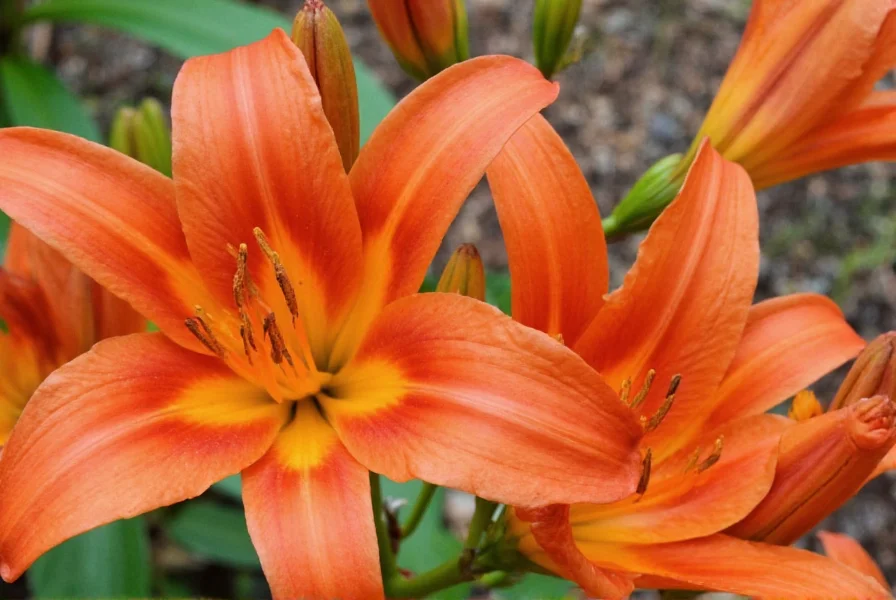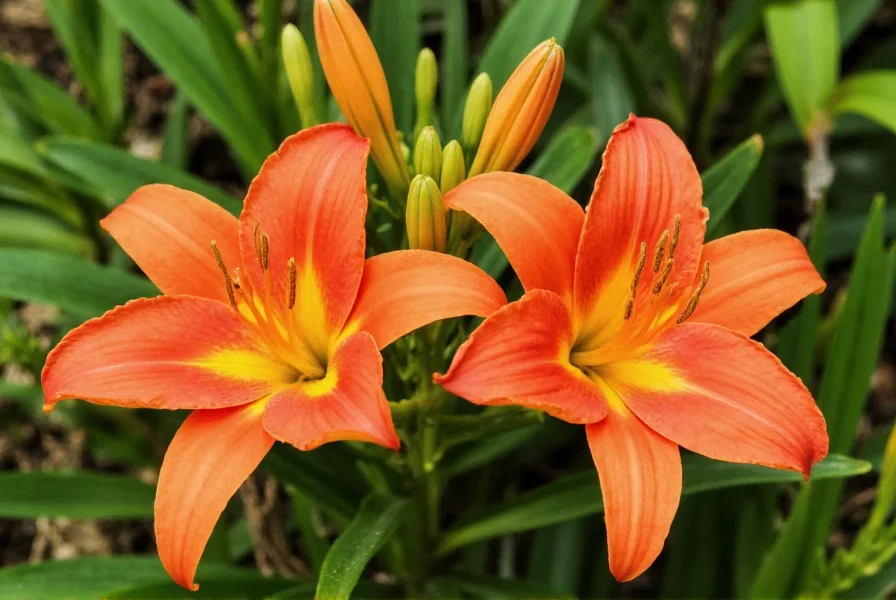Ginger lilies, scientifically classified under the Hedychium genus, represent some of the most spectacular tropical perennials for garden enthusiasts. Despite their common name, these plants belong to the Zingiberaceae family, sharing botanical relations with culinary ginger (Zingiber officinale) but not with true lilies (Lilium genus). Understanding ginger lilies characteristics helps gardeners appreciate their unique beauty and specific cultivation requirements.
Understanding Ginger Lilies: Beyond the Name
The misnomer "ginger lily" creates frequent confusion among plant enthusiasts. True lilies grow from bulbs and belong to the Liliaceae family, while ginger lilies develop from aromatic rhizomes and produce the distinctive spicy scent when their roots are disturbed. This ginger lilies vs true lilies distinction matters for proper cultivation, as their growing requirements differ significantly.
Native to Southeast Asia and the Himalayas, Hedychium species have adapted to monsoon climates with distinct wet and dry seasons. Their natural habitat informs ideal growing conditions for ginger lilies, which require protection from frost while thriving in humid environments with filtered sunlight.
Popular Ginger Lily Varieties for Gardeners
Gardeners can choose from numerous ginger lily varieties, each offering unique floral displays and growth habits:
| Variety | Flower Color | Height | Notable Characteristics |
|---|---|---|---|
| Hedychium coronarium | Pure white | 4-8 ft | "White ginger lily" with intense fragrance, Hawaii's state flower |
| Hedychium gardnerianum | Yellow | 6-10 ft | "Kahili ginger" with orange stamens, strong citrus scent |
| Hedychium coccineum | Scarlet red | 3-5 ft | "Red ginger lily" with dramatic color contrast |
| Hedychium flavescens | Cream to pale yellow | 5-7 ft | "Butterfly ginger" with delicate fragrance |
When selecting best ginger lily varieties for your garden, consider your climate zone and available space. Some species can become invasive in tropical regions, so research local growing restrictions before planting.
Optimal Growing Conditions for Ginger Lilies
Successful cultivation of ginger lilies depends on replicating their natural tropical environment. These plants thrive in USDA hardiness zones 8-11, though gardeners in cooler climates can grow them in containers for seasonal display.
Light requirements: Ginger lilies prefer partial shade to filtered sunlight. Direct afternoon sun can scorch their large leaves, while too much shade reduces flowering. The ideal ginger lilies sunlight needs involve morning sun with afternoon protection.
Soil composition: These plants require rich, organic soil with excellent drainage. Amend garden beds with compost and well-rotted manure before planting. The perfect soil for ginger lilies maintains consistent moisture without becoming waterlogged.
Watering schedule: During active growth (spring through fall), keep soil consistently moist but not soggy. Reduce watering during winter dormancy. In dry climates, misting foliage regularly mimics their natural humid environment.

Planting and Care Guide
Follow these steps for successful ginger lily planting guide implementation:
- Timing: Plant rhizomes in spring after last frost when soil temperatures reach 60°F (15°C)
- Depth: Position rhizomes 2-4 inches deep with growth points facing upward
- Spacing: Allow 18-24 inches between plants for proper air circulation
- Fertilization: Apply balanced fertilizer monthly during growing season
- Mulching: Maintain 2-3 inches of organic mulch to retain moisture and regulate soil temperature
For gardeners in temperate climates, how to grow ginger lilies in containers requires special attention. Use large pots (at least 14 inches diameter) with drainage holes, and bring containers indoors before first frost. Reduce watering during winter dormancy while maintaining slightly moist soil.
Propagation Techniques
Expanding your ginger lily collection through ginger lily propagation is straightforward:
- Rhizome division: The most reliable method, performed in early spring before new growth emerges
- Seed propagation: Possible but slow, with plants taking 2-3 years to flower
- Stem cuttings: Less common but viable for some species
When dividing rhizomes, ensure each section has at least one healthy growth bud. Allow cut surfaces to dry for 24 hours before planting to prevent rot. This ginger lily division technique helps maintain plant vigor and prevents overcrowding.
Common Challenges and Solutions
While generally robust, gardeners may encounter several common problems with ginger lilies:
Pests: Aphids, spider mites, and grasshoppers occasionally bother these plants. Treat infestations with insecticidal soap or neem oil solutions. Regular inspection helps catch pests on ginger lilies before they become problematic.
Diseases: Root rot from overwatering represents the most serious threat. Ensure proper drainage and avoid waterlogged conditions. Fungal leaf spots may occur in humid conditions; improve air circulation and remove affected leaves promptly.
Environmental stress: Yellowing leaves often indicate improper watering or nutrient deficiency. Adjust your ginger lilies care routine based on seasonal changes and plant responses.

Landscaping with Ginger Lilies
Ginger lilies offer versatile applications in garden design. Their tropical appearance makes them excellent focal points in shaded borders or near water features. Consider these ginger lilies landscaping ideas:
- Plant in groups of three or more for dramatic visual impact
- Use as backdrop for shorter perennials in mixed borders
- Create tropical container arrangements for patios and entryways
- Position near seating areas to enjoy their evening fragrance
Their ginger lily flowering season typically occurs from mid-summer through fall, providing late-season color when many other perennials have finished blooming. The fragrant blossoms attract pollinators, particularly butterflies and hummingbirds, enhancing your garden's ecological value.
Seasonal Care Calendar
Adapt your maintenance routine throughout the year for optimal results:
- Spring: Divide rhizomes, plant new specimens, begin regular fertilization
- Summer: Maintain consistent moisture, deadhead spent blooms, monitor for pests
- Autumn: Reduce watering as growth slows, prepare container plants for indoor storage
- Winter: Protect in-ground plants with heavy mulch; keep container plants in cool, bright location
Understanding the complete ginger lilies growing cycle ensures you provide appropriate care during each phase of development.
Conclusion
Ginger lilies represent a rewarding addition to tropical and subtropical gardens, offering stunning blooms, delightful fragrance, and relative ease of care. By understanding their specific requirements for light, soil, and moisture, gardeners can successfully cultivate these exotic beauties. Whether you're creating a tropical oasis or simply adding unique elements to your landscape, proper ginger lilies care will yield spectacular results for years to come.
Frequently Asked Questions
Are ginger lilies edible like culinary ginger?
No, ginger lilies (Hedychium) are not edible like culinary ginger (Zingiber officinale). While they share the same plant family, Hedychium species contain different chemical compounds and are primarily ornamental. Some traditional medicinal uses exist in certain cultures, but they should not be consumed as food.
How cold can ginger lilies tolerate?
Ginger lilies generally tolerate brief dips to 25°F (-4°C) when well-established and heavily mulched. However, prolonged exposure to freezing temperatures will damage or kill the plants. In USDA zones 8-9, they may survive with proper winter protection, while zones 10-11 provide ideal year-round growing conditions.
Why are my ginger lilies not flowering?
Lack of flowering typically results from insufficient sunlight, inadequate nutrients, or improper watering. Ginger lilies need partial sun (morning sun with afternoon shade), regular fertilization during growing season, and consistent moisture. Young plants may take 1-2 years to establish before producing flowers. Ensure your plants receive at least 6 hours of filtered sunlight daily.
How fast do ginger lilies spread?
Ginger lilies spread moderately fast through rhizome growth, typically expanding 6-12 inches per season under ideal conditions. Some species like Hedychium gardnerianum can become invasive in tropical climates. To control spread, plant in containers or install root barriers, and divide plants every 2-3 years to maintain vigor and prevent overcrowding.
Can I grow ginger lilies indoors?
Yes, ginger lilies can be grown indoors in bright, indirect light with high humidity. Choose dwarf varieties for better indoor adaptation, maintain temperatures between 65-85°F (18-29°C), and provide consistent moisture without waterlogging. Indoor plants may require supplemental lighting during winter months and will likely produce fewer flowers than outdoor-grown specimens.











 浙公网安备
33010002000092号
浙公网安备
33010002000092号 浙B2-20120091-4
浙B2-20120091-4